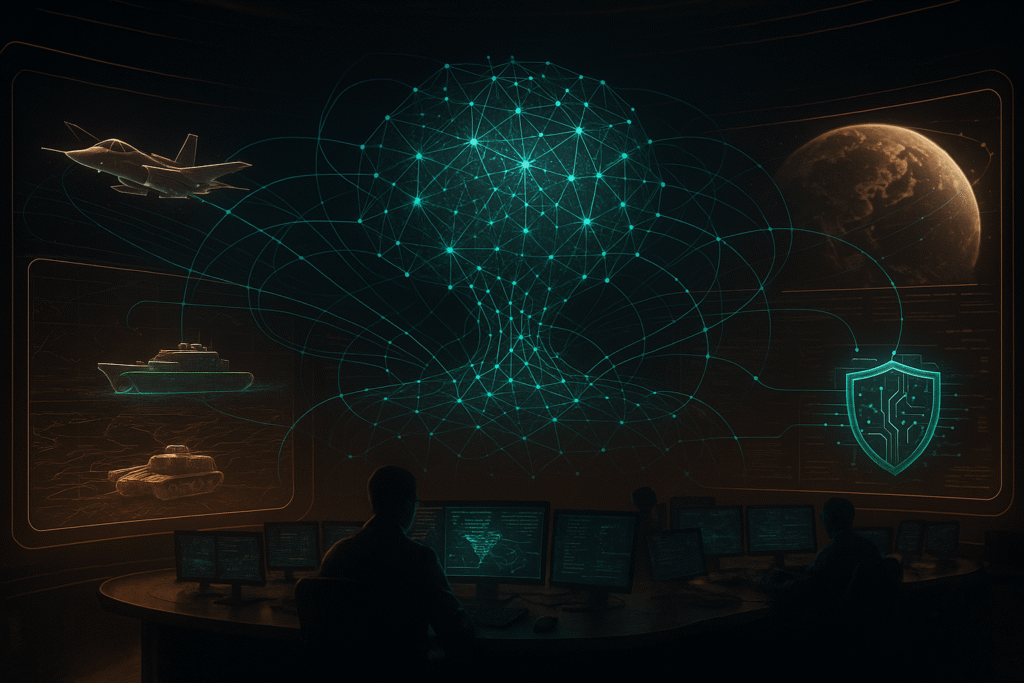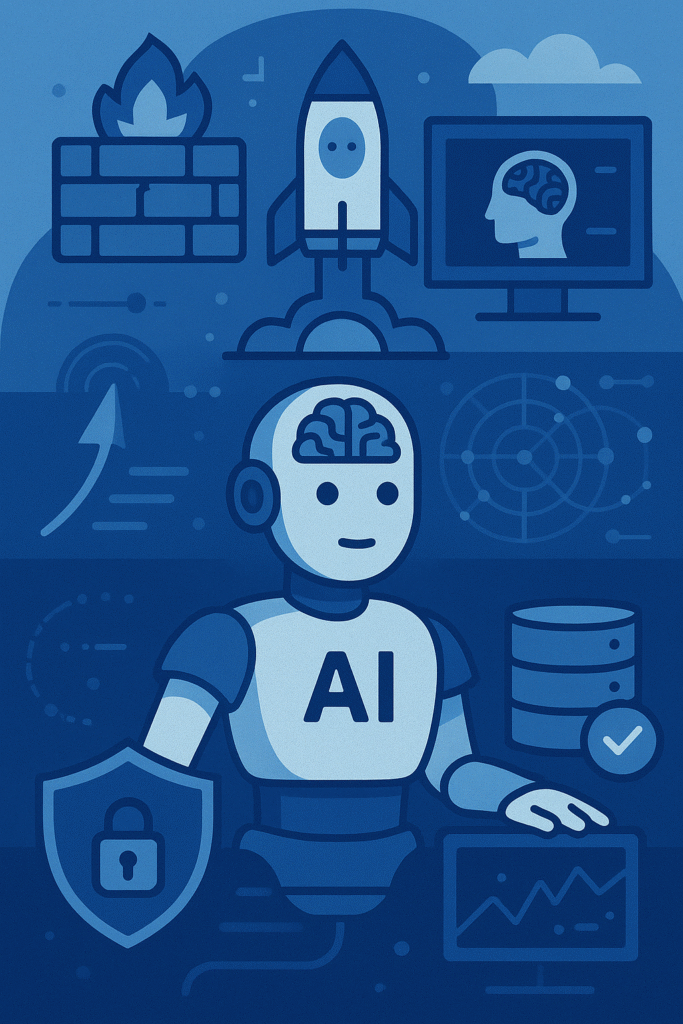Introduction
Modern warfare doesn’t happen in isolation. Air, land, sea, space, and cyber domains are now interconnected battlegrounds — yet most command systems still operate in silos. The U.S. Department of Defense’s Joint All-Domain Command and Control (JADC2) initiative seeks to unify these domains through data, connectivity, and rapid decision-making.
However, even after $8.2 billion in JADC2-related investments, interoperability remains a major hurdle. The real solution lies in AI agents — autonomous systems that translate, coordinate, and synthesize data across military domains in real-time.
The JADC2 Vision and the Silo Challenge
JADC2 aims to connect every sensor, commander, and shooter across all five domains. In theory, a fighter jet’s radar data should instantly inform a naval destroyer’s targeting system or a cyber defense response.
In practice, domain-specific systems often speak different “languages.” Each uses unique:
- Communication protocols
- Tactical doctrines
- Data formats and encryption standards
This fragmentation creates blind spots. A threat detected in one domain might take hours to reach another — by which time, the opportunity or danger has already evolved.
How AI Agents Bridge the Divide
AI agents function as intelligent mediators, capable of translating and orchestrating information across incompatible systems — without requiring system replacement.
- Real-Time Translation
AI agents learn communication patterns and automatically convert data formats, preserving context and tactical meaning. A naval sonar ping or a satellite anomaly becomes instantly understandable to land or air assets.
- Unified Situational Awareness
AI agents fuse inputs from multiple domains — radar data, cyber activity, space telemetry — to create a single, real-time operational picture. Commanders gain the ability to see, decide, and act faster across all environments.
- Coordinated Decision-Making
Machine learning models can correlate multi-domain activity — for example, linking cyber intrusions with electronic warfare spikes — and recommend coordinated responses within seconds.
Inside the AI Agent Architecture
Distributed and Layered Design
A true JADC2-ready AI ecosystem relies on a mesh of specialized agents:
- Domain Agents: Deeply trained in specific environments like air or sea operations
- Translation Agents: Handle protocol conversion and interoperability
- Orchestration Agents: Coordinate large-scale missions across domains
- Security Agents: Enforce zero-trust access and encryption
Federated Learning at the Edge
Each agent learns locally from real-world missions, sharing insights securely across the network — enabling adaptation without centralizing sensitive data.
Zero-Trust Security by Design
AI agents authenticate every request, encrypt every data exchange, and compartmentalize access — ensuring information flows securely across domains without risk of compromise.
Operational Advantages
Faster Decisions, Smarter Actions
By automating data fusion and analysis, AI agents reduce decision cycles by up to 75%. What once took hours now happens in minutes — critical in contested environments.
Comprehensive Situational Awareness
Commanders gain a single pane of truth: integrated air, land, sea, space, and cyber perspectives — with AI-prioritized threat assessments and resource recommendations.
Optimized Resource Utilization
AI agents dynamically assign the right platform to the right mission, whether repositioning satellites for coverage or re-routing UAVs for ISR support — maximizing efficiency across forces.
Overcoming Legacy and Security Barriers
Integrating Legacy Systems
AI agents connect old and new technologies through API gateways and data normalization, ensuring that even legacy assets contribute to modern JADC2 operations.
Standardizing Communications
Agents enforce compliance with military communication standards like MIL-STD-2045 and MIL-STD-6017, automatically translating between incompatible systems.
Security without Compromise
From classification management to audit trails, every AI interaction remains accountable and compliant with defense-grade cybersecurity frameworks.
Netray’s Cross-Domain AI Framework
Netray’s defense-grade AI architecture enables secure, scalable cross-domain integration through:
- Private cloud and on-prem deployments for classified environments
- Hybrid coalition networks for allied interoperability
- CMMC Level-3 and FIPS 140-2 compliance
- Multi-format intelligence processing — imagery, SIGINT, telemetry, and text
- Automated reporting in standard DoD formats
This framework bridges existing systems while laying the foundation for next-generation JADC2 environments.
Deployment Strategy
- Assessment and Pilot
Start with a systems audit to identify integration points, followed by pilot programs linking two or three domains.
- Incremental Expansion
Gradually scale across assets and operational levels, introducing orchestration agents for full multi-domain awareness.
- Full Operational Capability
Achieve a unified JADC2 ecosystem where AI agents autonomously coordinate joint operations, with commanders overseeing strategy and oversight.
The Strategic Edge
Cross-domain AI agents redefine what’s possible in joint operations:
- Mission speed – faster sensor-to-shooter loops
- Operational clarity – unified situational awareness
- Technological advantage – adaptive, secure decision systems
As adversaries invest in integrated warfare, maintaining siloed operations is no longer viable. True dominance will belong to forces that connect, coordinate, and act across all domains seamlessly.
Conclusion
Breaking operational silos isn’t about replacing systems — it’s about connecting them intelligently. AI agents serve as the connective tissue of JADC2, turning fragmented data into synchronized action.
With Netray’s secure, defense-ready AI framework, militaries can move beyond fragmented domain control to fully integrated multi-domain command and control — faster, smarter, and more resilient than ever.



